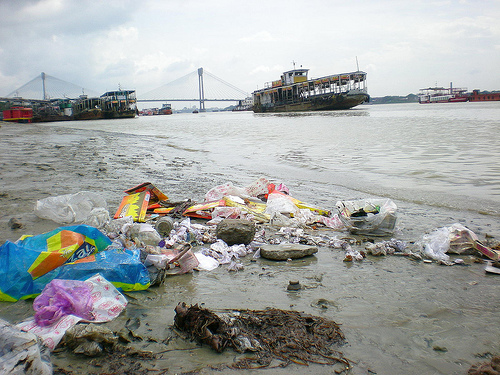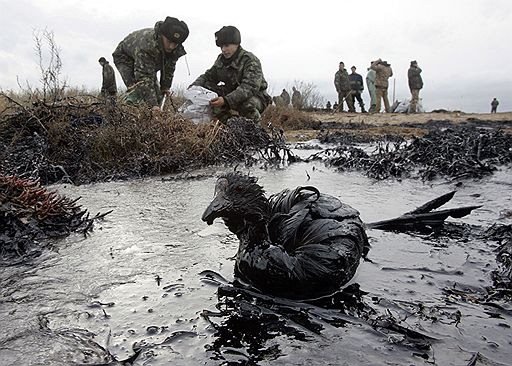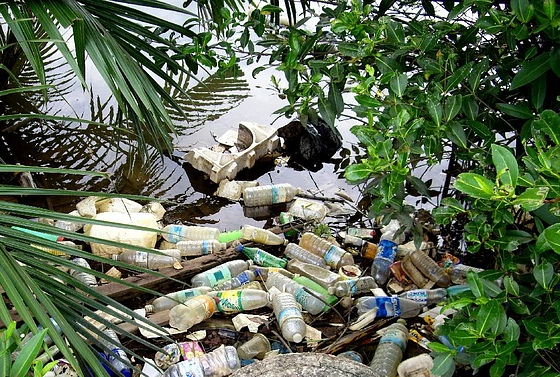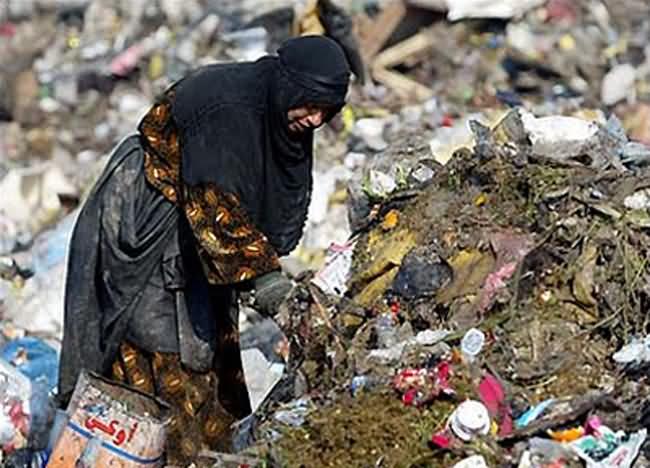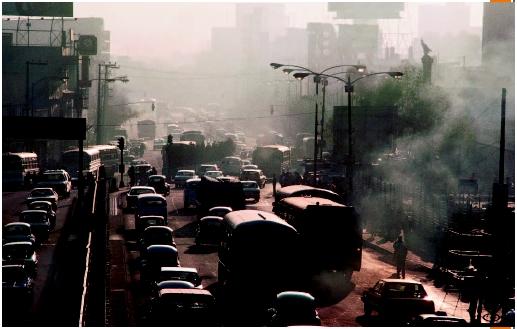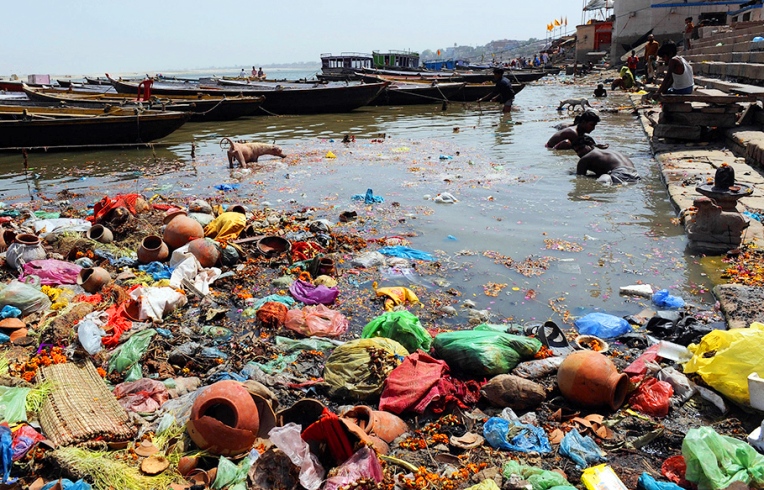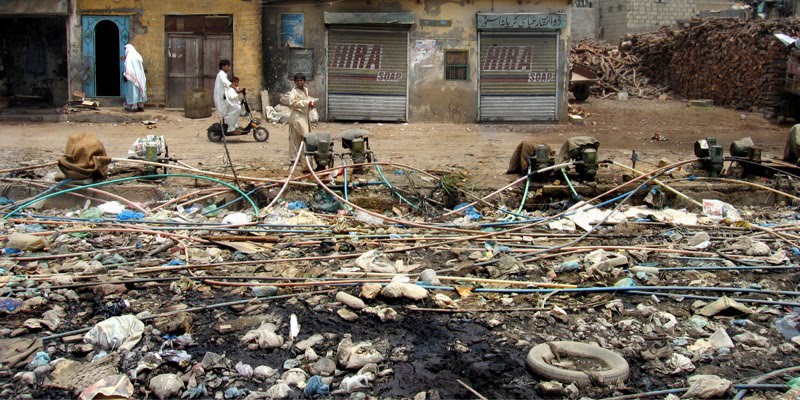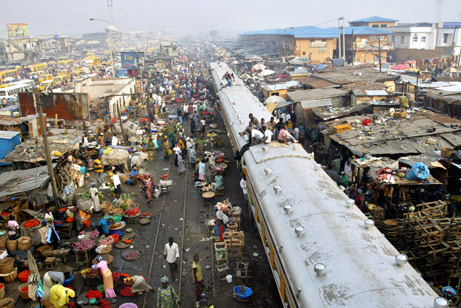10 Most Polluted Cities In The World
Pollution is a problem for many cities in the world, it has been a threat to environmentalist and developed countries. Efforts are being made to overcome the growing pollution in the world but for some cities its too much, and those are the ones where it hit the hardest. So if your a neat freak avoid these ten cities.
1. Maputo – Mozambique
Maputo is the capital and the largest city of Mozambique located on the bank of Indian Ocean. It is suffering from lack of sanitation processes–specifically the lack of a solid waste removal system as well as sewage treatment has created difficulties for people over there. Huge garbage dumps and piles of garbage seem scattered in the streets, and the sewage in the river can be seen.
Lots of water tore down buildings and uprooted telegraph poles are visible in the town and the town is partially under water. The fields that fed its 60,000 residents have now turned into marsh.
2. Moscow- Russia
Despite claims that Moscow is the most important and capital city of Russia and where people pay an average $3,000 a month for a three bedroom apartment does not even have clean running water, Moscow also has a huge level of air pollution which is resulting in daily strain on lung health. Cholera is on the rise in some of parts of Moscow due to filthy areas where there is no adequate arrangement to dispose of garbage.
3. Brunei – Darussalam
Brunei Darussalam is a small but enriched country with natural gas and petroleum resources located in South Asia surrounded by Malaysia.
Pollution now seems to be a growing concern in Brunei Darussalam. It seems there is a lack of information and research studies in the area. The air quality generally appears to be comparatively clean but this does not mean that Brunei Darussalam is free from air pollution. However, some studies have revealed a very high TSP level. Windblown dusts are the most apparent sources.
As part of the registration process vehicle emission tests are now being carried out in the city. The testing of vehicles includes emission test for carbon dioxide. Studies have revealed that generally pollution levels from vehicles are low except for high concentrations in particular places.
4. Baghdad – Iraq
Baghdad is the most trouble and vulnerable city of the world due to ongoing war on terror. Frequent bomb blasts and destruction has supplemented the pollution in the city. Poor water quality is threatening to aggravate the transmission of water-borne diseases in the city. Cholera has struck several provinces of the country, including Baghdad from August 2007 to December 2007. A recent study carried out by the United Nations Environment Program shows that air pollution, resulting from burning oil and aggravated by war, is causing grave concern.
Baghdad is suffering from a high degree of air pollution as a result of car fumes and smoke from power generators and other sources of pollution are hindering efforts to increase greenery. Baghdad’s dusty atmosphere is resulting air pollution caused by drought that continued for several seasons.
5. Mumbai – India
Mumbai is one of the most populated cities of the world so you can see piles of garbage in various streets of the city. It is also considered to be one of the busiest and crowded cities of the world. There are places in the city where you would perhaps not want to go due to stink that comes from filthy garbage scattered over there. The pollution in these areas is massive and is spoiling the beauty of the city on daily basis.
Apart from this, air pollution is also engulfing the city a lot. The gasses released into the air are so dangerous that it can kill a person gradually. Nevertheless, NGOs and other social activists are pledging to find the best solutions to redevelop the city. However the government hopes to transform Mumbai back into a modern metropolis despite recent economic decline. A recent report, issued by Vision Mumbai, proposed changes in infrastructure, pollution control and economic growth strategy, which is contributing to the seeking more than 1 billion dollar of aid from the Indian government.
6. New Delhi – India
“>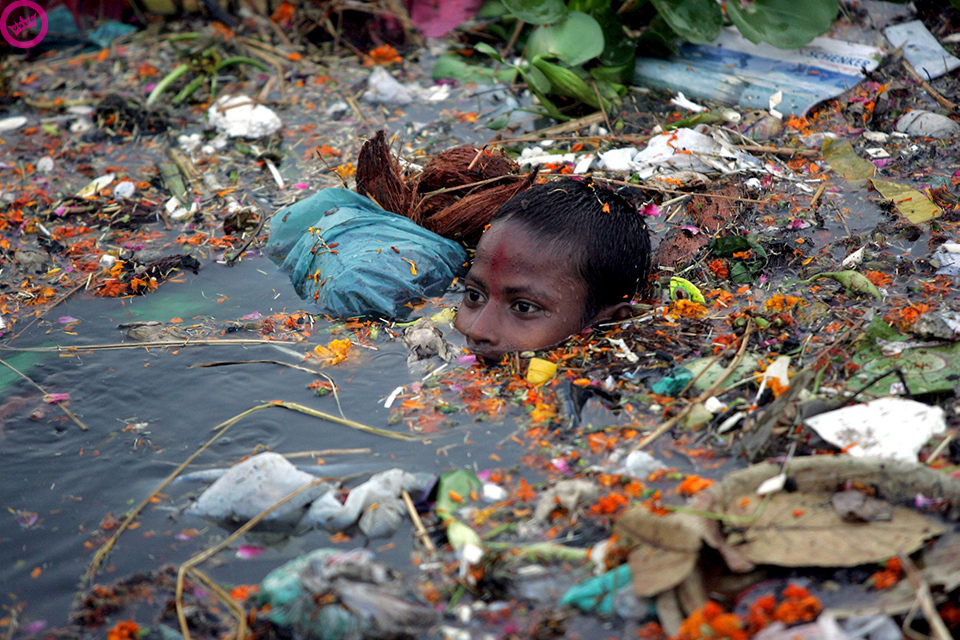
Garbage and sewage is creating water-borne diseases contributing to extremely high rates of infant morbidity in New Delhi.
Delhi is considered to be the fourth most polluted city in the world. Today pollution is one of the serious problems faced by the public and concerned authorities. Growing industrialization and migration is creating a unique challenge for the government to overcome. The alarming growth in the number of vehicles in Delhi is a major threat as everyday over 1000 vehicles are increasing on the roads in Delhi. The city is usually full of fog due to heavy traffic, and industries throw 3,000 ton of pollutants into the air every day. Thermal power plants contribute 13 per cent of air pollution.
Waste has become another major concern with the increase of hospitals in the city. Private hospitals and nursing homes do not have any adequate arrangements to treat hospital waste. Ground water is also being contaminated by toxic elements released by various industrial discharges.
7. Mexico City – Mexico
Mexico City the capital of Mexico has gone from among the worlds cleanest to among the dirtiest in the span of a generation. The average visibility of some 100 km in 1940s is down to about 1.5 km. Snow-capped volcanoes that were once parts of the landscape are now visible only rarely and levels of almost any pollutant like nitrogen dioxide (NO2) is regularly breaking international standards by two to three times. Levels of ozone a pollutant that protects us from solar radiation in the upper atmosphere but is dangerous to breathe, is twice as high here as the maximum allowed limit.
8. Dhaka – Bangladesh
Dhaka is the capital city of Bangladesh located in southern Asia, between Burma and India. The capital is battling with the constant threats of water pollution. Surface water is often thick with disease and pollutants from the use of commercial pesticides.
Dhaka has an estimated population of more than 8 million. Air pollution in the city has turned into a serious problem. Blackening of the city air and reduced visibility can be observed in some areas at times even with the naked eyes. Filth of choking garbage smells and irritating eyes are common. Piles of garbage can be seen in the streets of Dhaka and process of disposing them is very slow.
9. Karachi – Pakistan
Karachi is the metropolitan city and business hub of Pakistan: On one side the image of Karachi is being projected as major and industrial city of Pakistan but on the other hand pollution-related diseases in Karachi are on the rise due to intolerable levels of air and noise pollution in the city. Some 35 percent of people in one way or another are affected by these ailments including cardiac, lung, ENT, skin, eye and psychological diseases.
The main source of air pollution is the presence of two-stroke rickshaws and smoke emitting vehicles, these cause air and noise pollution and due to which nasal allergy, nasal polyp, sore throat and other ENT problems are increasing. Noise pollution is causing problems such as hearing impairment, headaches and hypertension.
The experts are concerned over the government’s apathy for not tackling this issue urgently. According to estimates, over 1.43 million vehicles are plied on the city’s roads and the number is growing continuously as more than 300 vehicles are being registered in Karachi every day.
10. Lagos – Nigeria
Lagos is the commercial capital and largest city in Nigeria. The hovering smoke over the city blurs the skyline of the central business area of Nigeria’s commercial capital. The city of 12 million residents and one of the biggest cities in Africa is facing a huge air pollution problem.
According to medical sources, respiratory ailments because of air pollution have become one of the massive problems facing the city hospitals. At the Lagos University Teaching Hospital, the prominent health institution in the city, about one-fifth of all ailments reported by the hospital's patients in the past two years were related to various degrees of respiratory problems.
Today, Lagos lacks a central sewage system and has no refuse incinerators. Sewage is still emptied into the lagoon while household refuse is collected by the waste authorities at a central dump to the north of the city, where it is burnt, sending plumes of acrid smoke into the sky at all times.
Categories: Weird/Odd
Sorry, comments are closed for this item.

